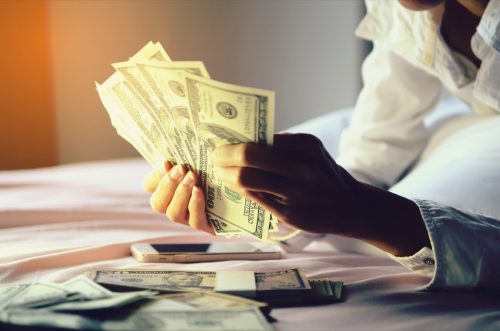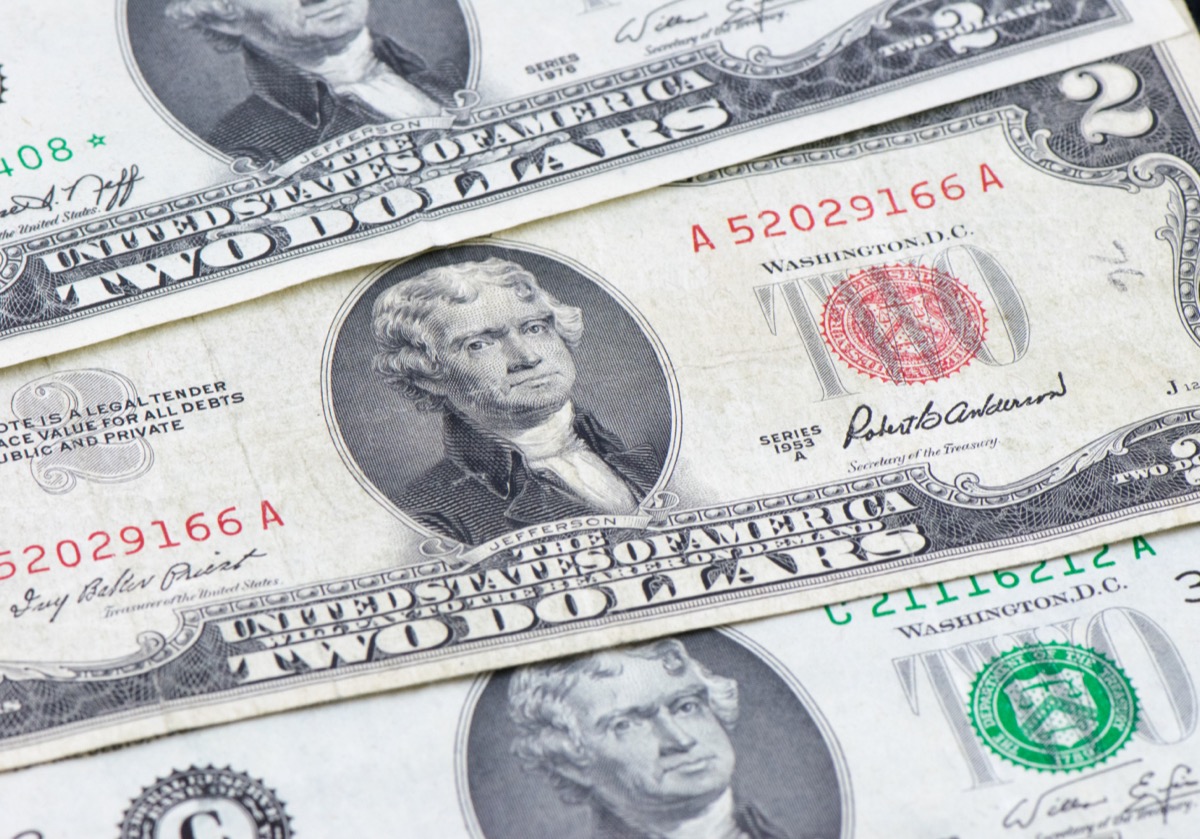$2 Bills Could Be Worth Thousands Now—What to Look For

A $2 bill is more than just an oddity—it could be worth thousands, experts say. In fact, a 2003 $2 bill sold at auction in July for $2,400, then resold shortly after for $4,000. The shocking sticker price was reportedly driven up by its recent print year and low serial number. Right now, the U.S. Currency Education Program estimates that there are 1.2 billion $2 bills in circulation—and if you happen to have one with certain features, it could be worth far more than its face value. Here’s what to look out for that could be worth thousands.
RELATED: Your Quarter Could Be Worth $21,000—Here’s Exactly What to Look for on the Front.
When it was printed can determine its value.

The recent high-profile sale demonstrated that newer $2 bills can hold high value if they have other abnormalities, including printing errors or notable serial numbers. However, your best bet for selling your $2 bill for top dollar is if you happen to have one printed before 1917. U.S. Currency Auctions notes that uncirculated $2 bills printed prior to that year are typically worth at least $1,000 apiece.
Whether or not it was circulated also affects its worth.

Whether or not your $2 bill was circulated can also affect its worth dramatically. Uncirculated bills are worth substantially more.
According to the International Bank Note Society’s grading standards, this means it is “a perfectly preserved note, never mishandled by the issuing authority, a bank teller, the public or a collector.”
You’ll recognize an uncirculated note if the “paper is clean and firm, without discoloration. Corners are sharp and square, without any evidence of rounding,” they add.
RELATED: 7 Vintage Kitchen Items That Could Make You Rich, Experts Say.
A star could also be a good sign.

Some $2 bills deemed “star notes” are also more valuable due to their rarity. On these bills, a star stands at the end of the serial number in replacement of the last letter. This method is used to denote replacement prints when previous currency was misprinted or damaged.
“Collectors generally consider Star Notes from print runs of 640,000 notes or fewer to be rare enough to be worth more than face value,” according to My Currency Collection.
RELATED: 8-Year-Old Finds Penny Worth $30,000 After Noticing Subtle Details You Should Look For.
Serial numbers can drive up the price.

The serial number, located at the upper right or left corner of the bill, can also influence value.
“What we look at is fancy serial numbers,” Dustin Johnson, vice president of Heritage Auctions, recently told Market Watch. “A serial number ‘1’ for a 1976 $2 would be worth $20,000 or more.”
Meanwhile, bills with solid serial numbers (those made up of all the same number) or “ladders” (those that rise or fall in order), are also considered high-value items.
However, Johnson notes that most $2 bills are not worth more than they were at the time of printing. “There are very few that actually exceed face value,” he says.
For more money tips directly to your inbox, sign up for our daily newsletter.
- Source: U.S. Currency Education Program